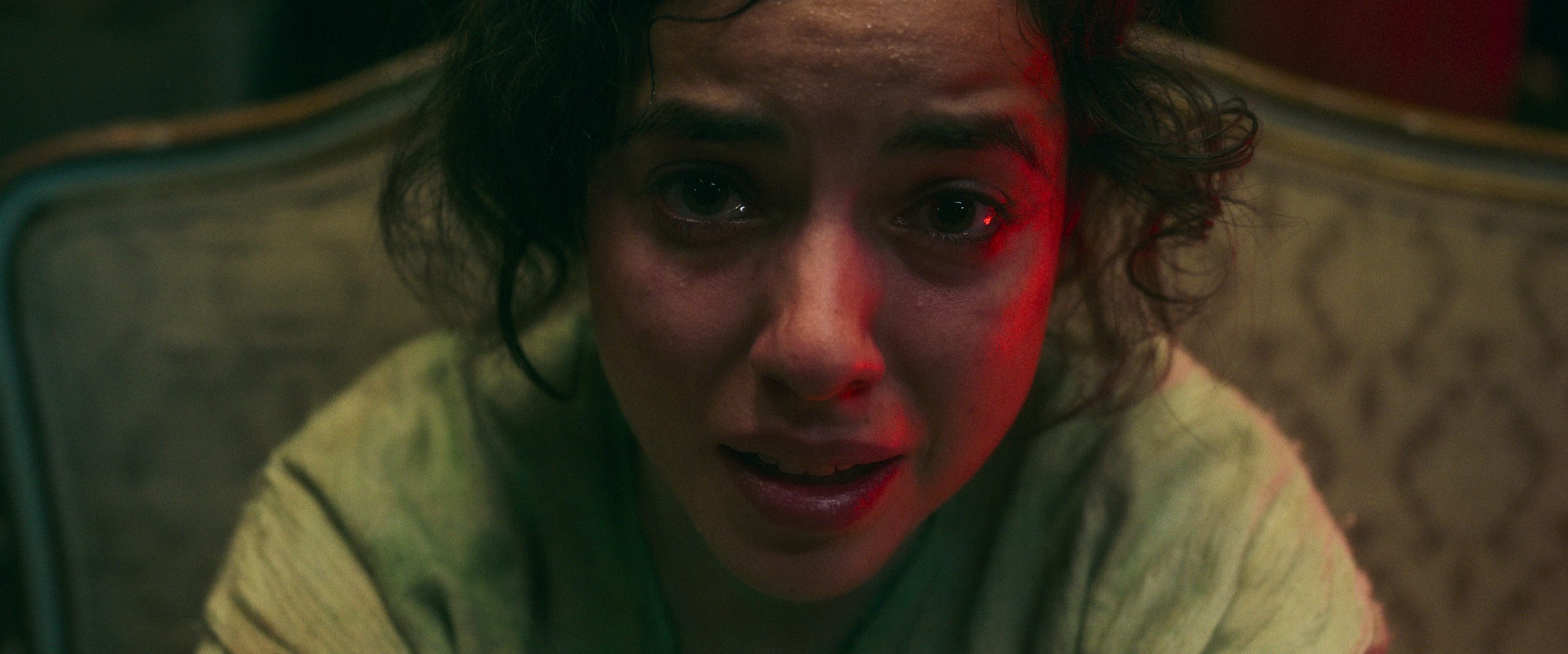(Warning: spoilers ahead!)
I consider la familia one of the most important and confusing parts of being a Latina, so I appreciated the 2021 Latinx movie No One Gets Out Alive for navigating this complicated territory inside the classic horror genre. But in the journey of killing off the mother and fighting the pressures of being a good Latina daughter, the movie ends up reinforcing established power dynamics that leave the Latina with no escape, just death.
My weekly tradition on Fridays is to turn on the LED lights, crack open a soda, and watch a movie. Recently in my queue was No One Gets Out Alive. I genuinely had no clue what the movie was going to be about except that there was a Mexican actress at the center playing an undocumented migrant. This made me excited because horror is one of my favorite genres, but I was also curious (and honestly worried) to see how the movie would frame her Latinidad and documentation status. Would they use horror conventions to show how terrifying government policies and white society is towards racialized immigrants? Would they use Mexican folklore to “amp up” the horror? Would they unnecessarily and unethically exploit the Latina character for the sake of gore and plot development?

No One Gets Out Alive tackles the basic American Dream narrative, but it exposes the manipulation and violence that immigrants face in the US through horror movie conventions (it felt like I was walking in my creepy dorm basement for over an hour). The main story follows Ambar who just moved to Denver after her mother died in Mexico. She has a clothing factory job and finds a really cheap apartment that only wants female tenants. Soon after moving into the house turned apartment complex, Ambar starts seeing dead women, including her mother. The culprits? An Aztec God by the name of Itzpapalotl and the landlord’s brother who has been sacrificing immigrant women to the god to feel “better” from his ongoing mental health issues.
It is important to state that I actually did not get much backstory on the god, nor was the brother’s mental illness discussed further than to explain his need to be “healed.” I found the lack of story and explanation about Itzpapalotl to be harmful given that the idea of rituals and sacrifices is tied to cultural racism. Yet the movie does show Itzpapalotl to be real, not a figment of the imagination. The god wants human sacrifices, yet oddly enough, it seems that Itzpapalotl can only eat willing and calm humans. Therefore, the god presents humans with a comforting image or memory such as that of a loved one to make them accept the sacrifice. For Ambar, she sees her mother in the hospital asking her to stay, but by rejecting this plea from her “mother,” she is able to defeat Itzpapalotl and escape. She then kills her captors, sacrificing one to Itzpapalotl on the way. In the ending scene, Ambar’s injuries are healed and we see her look back. She is staying.
Although the film’s commentary on migration is heavy, there was a deeper story of a constraining and complicated mother-daughter relationship. Ambar clearly loves her mother, but as the memories of her loop over and over, it is apparent that Ambar feels guilty for wanting to leave, for possibly being happy now. The phone messages Ambar listens to repeatedly are not just to show that Ambar clings to her mother’s memory, but that there is tension between Ambar’s dreams and her mother’s wants. Para la familia is an all too familiar motivator and detriment.

I heavily resonated with the pull and tug of wanting to find yourself versus meeting the expectations of la familia. When I received my acceptance letter from Brown, besides joy, there was guilt. I could have just applied to schools within Texas, and I kept thinking how selfish it was of me to move so far away. As Latinas, we are supposed to do everything for the family, and we often do. But at times that comes at the sacrifice for our individual dreams. Plus, just like in the movie, it reinforces strict gendered rules. Ambar stayed with her mom all those years because she was told she was “too kind” to leave. How many times have we been told that we are supposed to be nice? That we are supposed to be less ourselves for others? As daughters, sisters, companions, future mothers. I do not doubt that Ambar cares for and loves her mother, but kindness is used as an excuse to keep women in a place full of “what-ifs.”
I am still in my journey of finding myself, but the more years that pass by, the more I realize that I can love my family and still challenge us to be better. Such as by attacking patriarchal notions of what a Latina is supposed to do and be for the family. Unacknowledged and forced sacrifices breed denial, hate, and violence. The moment Ambar kills her “mother” is a visible rejection from Ambar of her guilt. She was killing the kind, nice girl and the idea of her having to lessen herself to make others comfortable.
Yet in the final scenes of Ambar looking back and choosing to stay made me feel like she lost the future she gained. There is no winning for Ambar. If she accepted her role as a good girl who stayed by her mother, she would have been killed. Yet the idea of Ambar taking over the sacrificial cycle shows that she is going down a path of power-hungry killings and immoral judgments. That doesn’t leave those of us who want to honor our families AND chart our own courses a lot of options. Simply replacing who has the position of power is far from progressive, it is a death sentence. Kudos to the writer, I guess no one got out alive.

